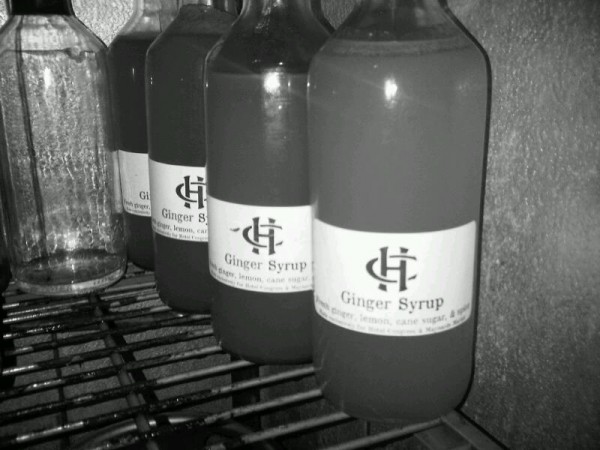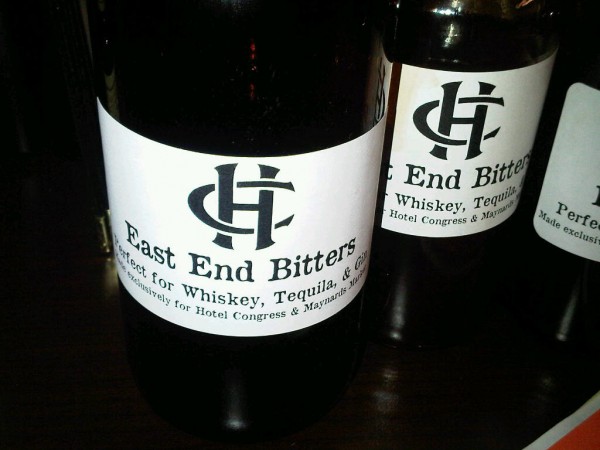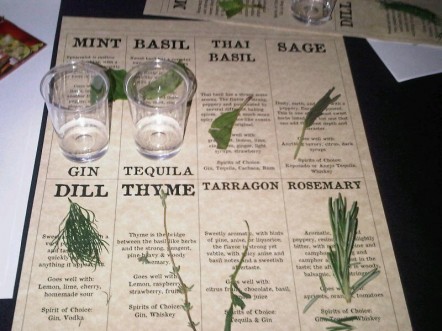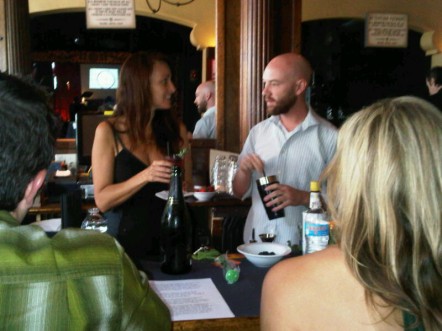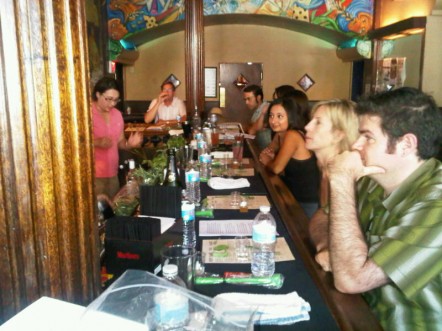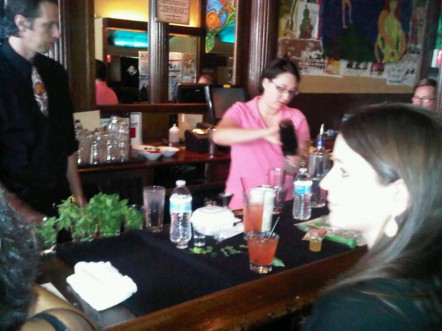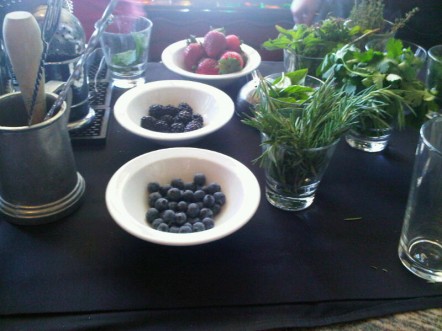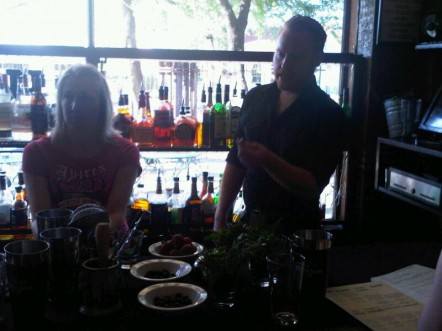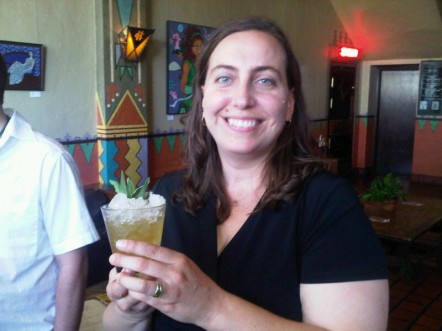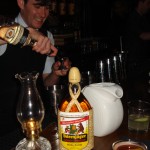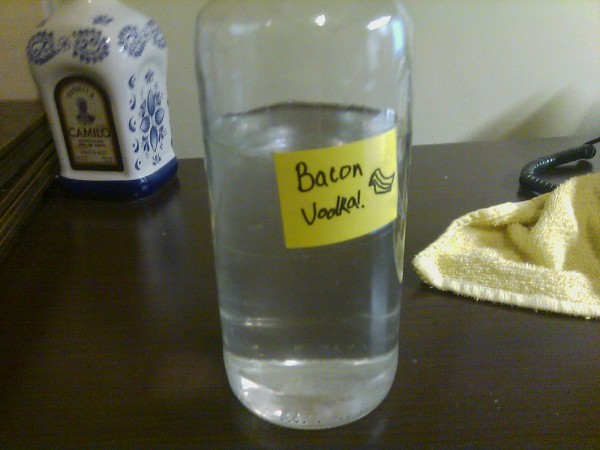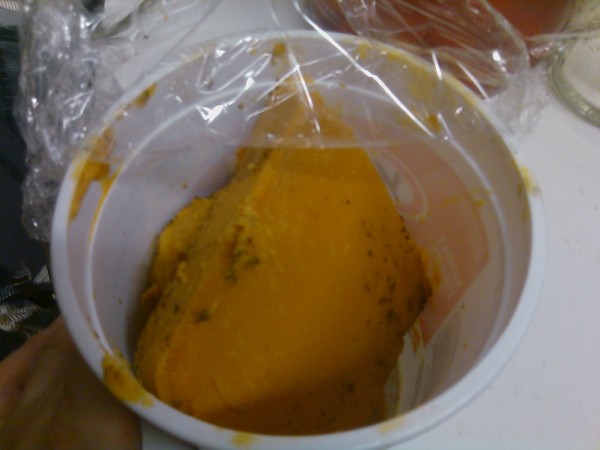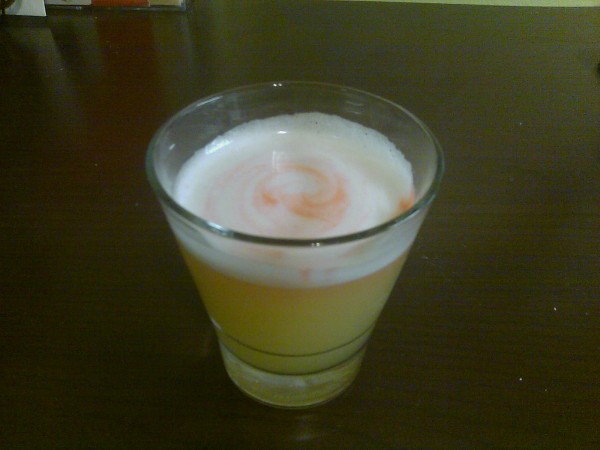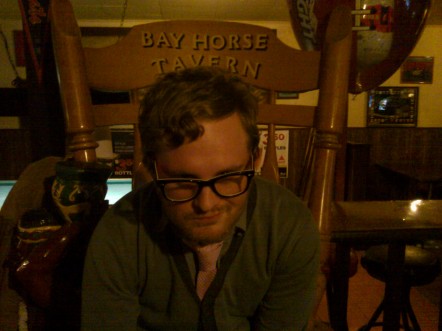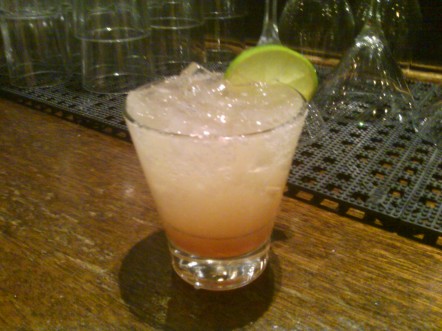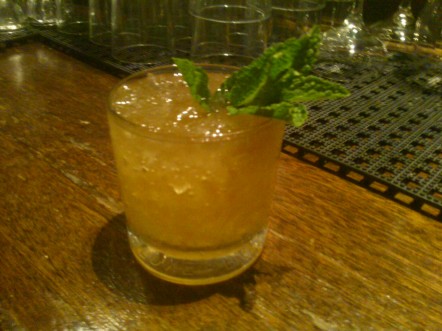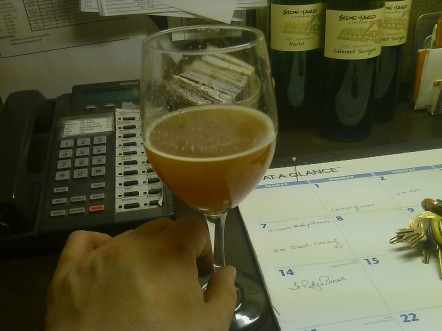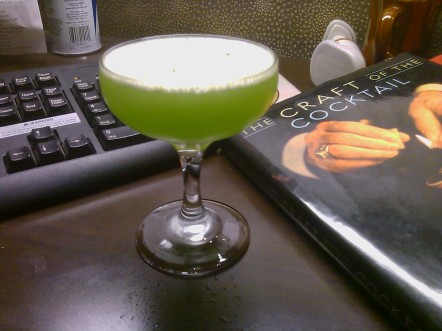The Nightclub & Bar Convention & Tradeshow is Decadent & Depraved
A Report from One of The Industry’s Biggest Professional Events
Only a fool would turn down an opportunity to stroll into quiet, quaint Las Vegas and hob-knob with industry bigwigs, up-and-coming mixologists, and nightclub gurus from some of the world’s most successful on-premise operations in a 30,000 square foot exhibition hall filled with booze. So naturally I was among the attendees when the doors opened last Tuesday; dull-eyed and fuzzy from a two nights’ worth of good ole fashioned Hard Drinking on the Strip. It was my first time at the fabled event, and it was advertised as more than just an ordinary convention: it was the 25th anniversary of the event, and the website promised a menagerie of extraordinary parties, seminars, and networking events.
But the reality was that while it was a fun experience, I spent three days trying to find my niche (unsuccessfully, I might add) alongside throngs of men who seemed to be rejects from The Jersey Shore; their eyes beady and desperate, over-muscled with fake tans, foaming at the mouth and clawing frantically at anything wearing a skirt.
The exhibit hall was a nightmarish labyrinth of ill-conceived fledgling brands of vodka, unconvincing social networking services, and print shops hawking all manner of branded apparel. The first merchant I saw upon entering was a monstrous Ed Hardy/Christian Audigier disaster flanked on both sides by small tiki booths pushing some energy drink named Wave. Wave, in case you have yet to try it, is a blue-colored energy drink from North Carolina that touts lower caffeine and higher B-Vitamins. It tastes a little like what would happen if you dumped a packet of Hot Rocks into a Sonic Drive-Thru Ocean Water drink. Not good for a sour stomach, let me tell you.
In the course of five hours I was able to accumulate seventy or so brochures, catalogs, and business cards from people whose services I did not need or want. For instance, why would I want a device that hooks onto a Corona beer and functions solely as an additional place to hang a lime? Apparently someone wants this product… I just know it won’t be me… at least until I give up on trying to be a cocktailer and open a Mexican resort-style eatery with horrid mini-chimis and buckets of Coronitas.
I couldn’t fathom why certain businesses would waste their time & money with a booth… take, for example, Inada Industries – Maker of the #1 Luxury Massage Chair In the World (according to their website):
With a quality unparalleled and a technical expertise uncharted by competitors, INADA massage chairs deliver the most premium and exquisite luxury massage experience on the market. Consciously constructed with the ancient knowledge of the body’s shiatsu points, the INADA massage chair works you over like a team of shiatsu healing masters. The result? A massage chair that feels superior to anything else on the market today.
And I ask again: What the *%&$ does this have to do with nightclubs and bars? I guess any bit of exposure helps, but isn’t there someone who works for the convention doing vendor screening? Do they really see a need for five or ten different fashion booths, or a booth dedicated to disposable insoles made for vending machines?
I did discover one fascinating technology, however: A device that pumps nitrogen bubbles into a drink, forcing the drink to become instantly cold and to “smoke” much like dry ice does, but without the potentially dangerous side effects of swallowing a large chunk. Apparently this machine is one of a kind, but it carries a hefty price tag: $5000. Maybe a little too rich and gimmicky for my blood, but I had a mini-fantasy for about two seconds about pumping out nitrogen-cooled Sazeracs to a swarm of thirsty customers. How cool, indeed.
I should mention that most of these observations came under the influence of our good friend alcohol. I certainly wasn’t completely sober as I roamed the aisles, checking out prices on building my own Irish Pub. One highlight included myself and a friend convincing master mixologist Bobby Gleason at the Beam Global booth to make us two sazeracs with Fee’s Aztec chocolate bitters, even though he was only serving small samples. He actually seemed incredulous that this would be a good combination… which prompted me to do a haphazard victory dance in the wake of his discovery that the drink was not only palatable, but quite delicious.
What excited me most were the three seminars I attended on my last morning there. The first was a keynote speech by none other than Dan Ackroyd, Ghostbuster-cum-Liquor Mogul, who now touts his designer “Crystal Head Vodka”. I was never a fan of the Blues Brothers, and predictably he employed a smattering jokes referencing the movie… which drew a few chuckles from the crowd, but not from me. However I can’t completely discount what he had to say. He spoke very warmly and with passion about the beverage industry and it quickly became clear to me that we need more public figures reaching out to legitimize our profession for a change, instead of demonizing it. But let’s face it: Crystal Head Vodka is ridiculous.
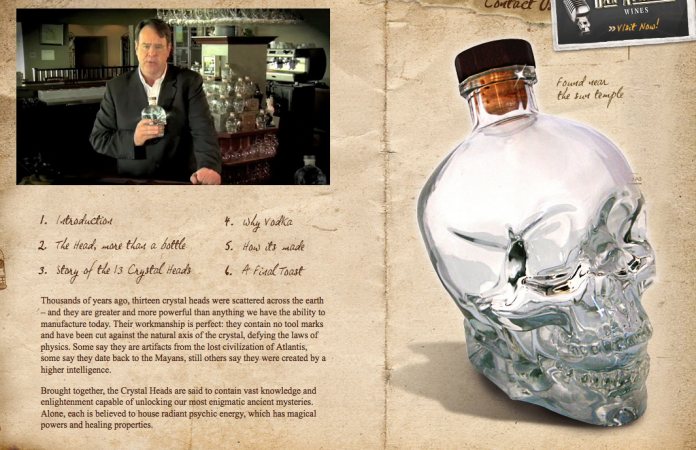
"Taste The Legend"
Do we really need another vodka, especially one in a bottle that is awkward and impossible for bartenders to serve with correctly? I tasted the contents of Ackroyd’s mystical creation… it’s vodka, folks. Anything past Smirnoff that is still 80 proof pretty much tastes the same as long as it’s distilled from the same product. So in conclusion, I’m sorry Dan, as much as you are doing great stuff for the industry, your product is overpriced and mediocre (P.S. Dan Ackroyd, if you are reading this, I will TOTALLY rescind everything I said and become your brand ambassador.)
I also attended a panel discussion led by Simon Ford, Director of Brand Education for Pernod Ricard; Max Warner, Global Band Ambassador for Chivas Regal and Plymouth Gin, and Jim Meehan of PDT in New York. The subject was “Emerging Cocktail Trends” and while we listened to those fine gentlemen regale us with their experiences, Jim’s helpers served a cocktail of his design. I forget the name, but here was the recipe:
1.5 oz. Plymouth Gin
.5 oz. Plymouth Sloe Gin
.5 oz. Nocino (ß this is a green walnut liqueur which PDT tends to make in-house. If you can’t find this, you might substitute Nux Alpina Walnut Liqueur, which is available from major distributors.
It was well-balanced and tasted a lot like an Italian vermouth. Very aromatic, with a darker sweet character that is immediately cut with some dry element… in this case, a combination of the gin and the backend of the nocino’s green walnut bitterness.
Jim & Co. had some interesting, pertinent things to say. Obviously at the forefront were suggestions like: revisit the classic cocktail, employ proper technique, use all fresh ingredients, employ balance, and limit cocktails to four, maybe five ingredients. This reaffirmed most of what I’d been stewing over for a while, and a couple times a light bulb went off in the old noggin.
Speaking of fresh ingredients… my final presentation, only two hours before I had to be on a plane back to Tucson, was with two of my personal heroes… Tony Abou-Ganim, former head of beverage at the Bellagio and author of the new book, “The Modern Mixologist”; and Dale DeGroff, the guy who built the Rainbow Room in NYC to prominence and wrote one of the most fantastic books on the mixed drink ever (if not the best) called “Craft of the Cocktail”. The subject of the seminar was how to convert a high-volume operation (like Congress) to fresh-squeezed juice. We were already 9/10ths of the way there… I just needed this final push to make the last changes. So when you come into the Cup Café or Club Congress, expect your drinks to have fresh-squeezed lemon and lime juice. No more “sweet ‘n sour” on the gun.
In celebration of our fresh juice program’s humble beginning, I made one of our regulars two different drinks: a vodka sour made the way he is accustomed to drinking it (sweet and sour from the soda gun behind the bar) and a vodka sour with vodka, fresh lemon, real simple syrup, and just a touch of angostura bitters.
Fresh Vodka Sour
1.25 oz. Vodka
.75 oz. Fresh Lemon Juice
.75 oz homemade simple syrup (equal parts sugar and water)
Egg white (optional, rarely used unless requested)
Dash of Angostura bitters
Combine ingredients in a mixing glass and shake very hard until metal tin becomes ice cold to the touch. Sometimes it is necessary to shake the ingredients and egg white together without ice to achieve desired level of froth. Strain ice cold mixture into either a chilled old-fashioned glass, cocktail coupe, or on ice in an old-fashioned glass. Dash bitters on top of the drink.
Guess which way he liked it better? It’s not even close…

